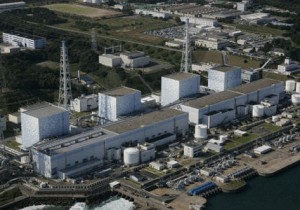 There’s a 40 year-old nuclear reactor cooling-down right now in Japan following the big earthquake in that country. Actually there are 11 such reactors cooling-down, automatically brought offline by the 8.9 temblor, but one of those reactors at the Fukushima Daiichi generating plant is not going gracefully and 3000 people have been moved from their homes as a precaution.
There’s a 40 year-old nuclear reactor cooling-down right now in Japan following the big earthquake in that country. Actually there are 11 such reactors cooling-down, automatically brought offline by the 8.9 temblor, but one of those reactors at the Fukushima Daiichi generating plant is not going gracefully and 3000 people have been moved from their homes as a precaution.
Good idea.
I worked as an investigator for the Presidential Commission on the Accident at Three Mile Island, 32 years ago, and a few months studying the plumbing TMI’s Unit 2, which is actually younger than the errant Japanese reactor, gives me a very healthy respect for the danger in Japan.
That Japanese reactor shut down automatically within seconds of the earthquake, the idea being that dropping the thermal load (stopping the nuclear reaction and cooling-down the reactor) would minimize risk overall from a huge plumbing system that was likely compromised and vulnerable. Radiation and the passage of time conspire to make pipes brittle and aftershocks make brittle pipes break. Not good.
The 10 other reactors behaved as expected, but this unit didn’t. Once the reactor was no longer making steam to drive a turbine and generate electricity the plant was supposed to fire-up diesel generators to make the power needed to keep coolant pumps running. Only the diesels wouldn’t start. It can take up to seven days, you see, to get such a reactor down to where it can survive without circulating coolant. With the diesels out (under water perhaps?) the plant relied on batteries to run the pumps — batteries good for only eight hours.
Tokyo Electric Power Company isn’t saying much. Utilities tend not to and Japanese utilities are notoriously secretive. But we got a clue to what’s happening from U. S. Secretary of State Hillary Clinton, of all people, who remarked that the U. S. military was delivering “coolant†to the stricken reactor.
“Coolant?†wondered aloud all the CNN and Fox News nuclear experts looking for a lede for their stories. “What is she talking about, coolant?†This is a boiling water reactor and the coolant is water. The U. S. Air Force isn’t needed to export water to Japan.
This shows the limits of cable news experts and maybe experts in general, because Hillary isn’t the kind of person to choose the wrong words. She said “coolant†and she meant “coolant.†Though she may not have known she was saying so, she also meant the reactor was dead and will never be restarted.
A boiling water reactor does just what it sounds like — it boils water to make steam that drives a turbine generator. This is as opposed to a pressurized water reactor that uses the nuclear reaction to heat a coolant that never really boils because it is under high pressure, then sends that coolant through a heat exchanger which heats water to make steam to drive the generator. Boiling water reactors are simpler, cheaper, but generally aren’t made anymore because they are perceived as being less safe. That’s because the exotic coolant in the pressurized water reactor can contain boric acid which absorbs neutrons and can help (or totally) control the nuclear reaction. You can’t use boric acid or any other soluble boron-laced neutron absorbers in a boiling water reactor because doing so would contaminate both the cooling system and the environment.
That’s why the experts didn’t expect it because they are still thinking of how the plant can be saved, but it can’t be.
Though the boiling water reactor has already been turned off by inserting neutron-absorbing control rods all the way into the core, adding boric acid or, more likely, sodium polyborate would turn the reactor off-er — more off than off — which could come in really handy in the event of a subsequent coolant loss, which reportedly has already happened. But that’s a $1 billion kill switch that most experts wouldn’t think to pull.
I’m guessing the US Navy delivered a load of sodium polyborate from some nuclear aircraft carrier reactor supply room in the Pacific Fleet. Its use indicates that the nuclear threat is even worse than presently being portrayed in the news. Tokyo Electric Power Company has probably given-up any hope of keeping those cooling pumps on after the batteries fail. Eventually they’ll vent the now boron-laced coolant to the atmosphere to keep containment pressures under control.
Sodium polyborate, by the way, is something you might use around the house, since it is the active ingredient in most flea and tick treatments.
An earthquake with such loss of life is bad enough, but Japan has also just lost 20 percent of its electric generating capacity. And I’ll go out on a limb here and predict that none of those 11 reactors will re-enter service again, they’ve been so compromised.


 Due to the extensive damage in Japan caused by the massive earthquake and resultant tsunami on March 11, many have questioned if the island nation can recover in a year, much less a few months. If the swiftness with which the Japanese can repair roads is any indication, we wouldn't bet against the country cleaning up this catastrophe in short order.
Due to the extensive damage in Japan caused by the massive earthquake and resultant tsunami on March 11, many have questioned if the island nation can recover in a year, much less a few months. If the swiftness with which the Japanese can repair roads is any indication, we wouldn't bet against the country cleaning up this catastrophe in short order.